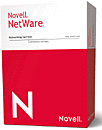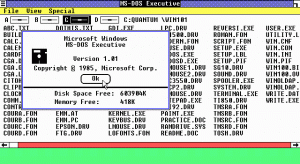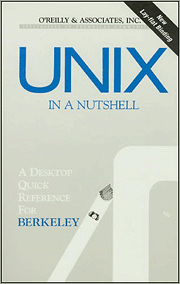 In 1983 Raymond Noorda of Novell picked up on work originally done by Superset Software, a group that included Drew Major, Dale Neibauer, Kyle Powell and later Mark Hurst, who were later hired to continue work on the project. They were assigned the task of creating a disk sharing system for CP/M, the dominant OS for the hardware that Novell sold. Not confident in the future of CP/M, the team instead built a file sharing system based on the relatively new IBM-PC architecture. This spawned the first commercial network application, a game called Snipes used to test and demonstrate the network’s capabilites. Snipes is considered the beginning of multiplayer network games.
In 1983 Raymond Noorda of Novell picked up on work originally done by Superset Software, a group that included Drew Major, Dale Neibauer, Kyle Powell and later Mark Hurst, who were later hired to continue work on the project. They were assigned the task of creating a disk sharing system for CP/M, the dominant OS for the hardware that Novell sold. Not confident in the future of CP/M, the team instead built a file sharing system based on the relatively new IBM-PC architecture. This spawned the first commercial network application, a game called Snipes used to test and demonstrate the network’s capabilites. Snipes is considered the beginning of multiplayer network games.
The resulting network operating system became known as Netware, with the first product being Netware 68 released in 1983. Subsequently, Netware 86 arrived in 1985, followed by Netware 286 in 1986, and Netware 386 in 1989. Novell dominated the NOS market from the mid 80s to the early 90s due to Netware’s high performance. Netware was so stable, there are reports of Novell servers running for years without interruption. Later Windows NT began killing the competition, and Novell was one of the few that barely survived, thrown from it’s top spot. Today Novell still produces Netware and recently acquired SUSE Linux and is actively developing new products.




